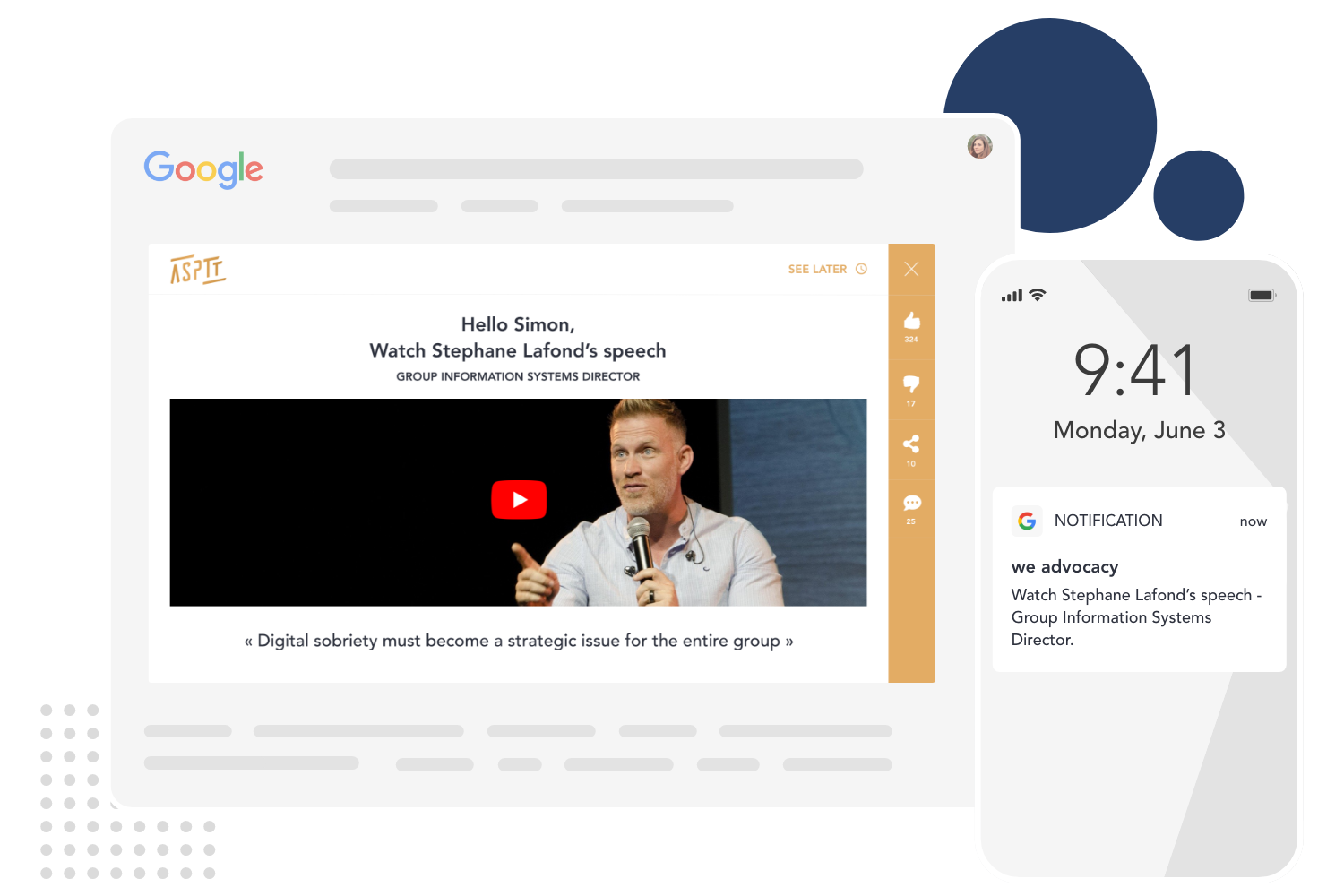
Why set up an employee advocacy process?
The trend of the beginning of 2019 is employee advocacy or employee engagement. This concept brings with it several challenges in terms of communication and human resources management.
It is not always easy to understand the benefits of an employee engagement approach. In this article, we propose the main advantages of such an approach.
The impact of the digital transition on professional relations
The digitalization effort of companies has evolved a lot in the last few years. Digital has become an indispensable criterion in their strategies. Until now, efforts have focused on the relationship between the company and its customers.
Today, it is the relationship between the company and its employees that is also impacted by the digital transition. Indeed, many departments can be affected.
Let’s take the example of human resources, where recruitment processes are constantly evolving along with the emergence of new tools (Linkedin and Glassdoor for example). Human resources are facing new issues, similar to those of marketers, in order to improve the image of their employer brand in a competitive and demanding job market: how to become more attractive and attract new talents? How to attract millenials to your company?
Restore meaning to the “WHY” generation
This requires, among other things, giving back meaning to the “WHY” generation, by attributing more positive and human values to the organization. The implementation of an employee engagement approach can help to progress on these aspects in order to become more attractive and to retain its talents.
The role of employees is major in the development of a company. (A. Rouffet, webinar: Employee advocacy, the new black gold of the company, 2019). Putting in place the conditions for their commitment and well-being should not be considered as an additional effort for the company, but rather as a natural process of continuous improvement.
Paradoxically, in the particular context of the digital transition, it has become necessary to adopt a more human management by establishing quality relationships between the company and its employees. It has become obvious that the relational aspect is part of the performance drivers of a company.
Win-win for the employees and for the company
Considering employee engagement as a win-win strategy is also a key to success for all stakeholders.
On the one hand, for the company, it can positively impact the employer brand image, but not only. Generally speaking, the challenge of communication is to implement a relational strategy that allows to seduce, satisfy, create loyalty and even enchant customers so that they become ambassadors and promoters. If it is understood that this approach is essential, you must not lose sight of the fact that your first ambassadors are your employees. They can have a major influence on communication.
If a dissatisfied customer tends not to express himself (5% of them do), this is not the case for a dissatisfied employee who will be much more vocal and will have a real capacity to cause trouble in his network. Employees can be the best ambassadors, but they can also be the worst if they do not adhere to the approach. Taking care of and valuing your teams will ensure your reputation and your e-reputation.
Moreover, it is important to keep in mind that what happens internally is seen externally and influences the perception that your customers may have of your organization.
Integrating, involving and engaging employees
Doing your best to integrate, involve and engage your employees is a good practice. We must not neglect the power of influence of our employees, which also allows us to gain visibility and notoriety and to increase the company’s trust capital.
On the other hand, for the employee, the engagement process can be seen as a factor of well-being at work. An engaged employee is an informed and integrated employee, but also an actor of the communication within the company. By becoming an actor, the latter acquires more responsibilities and feels valued and fulfilled.
A happy employee is a more productive and efficient employee. They will also be a source of proposals and will be more likely to take initiatives. This is what the win-win approach is all about.
However, be careful not to bring the approach as an additional workload, but to consider it from a more positive and benevolent point of view. This initiative will prove to be a real added value, both for the company’s image and for the productivity of the teams.
The benefits of employee advocacy
For human resources
- Reduction of hidden costs linked to the negative behavior of dissatisfied employees
- Decrease turnover by enhancing the employee’s experience
- Enhancement of your employer brand: Attract new talent, become an attractive entity.
- Better circulation of internal and external information
- Improved efficiency and performance, thanks to more fulfilled teams and more responsible employees.
For communication
- Maximization of your trust capital and multiplication of your visibility thanks to the influence of your employees.
- Development of richer and more varied communication axes thanks to the involvement of the whole team.
- Better perception of your customers thanks to a benevolent policy towards your employees which is reflected externally
You now know some good arguments. To learn more about the employee ambassador approach, we invite you to follow our news!
Solution
Internal Communication
Radically change the way you communicate internally and survey your teams regularly and easily.
Solution
Internal Communication
Radically change the way you communicate internally and survey your teams regularly and easily.

